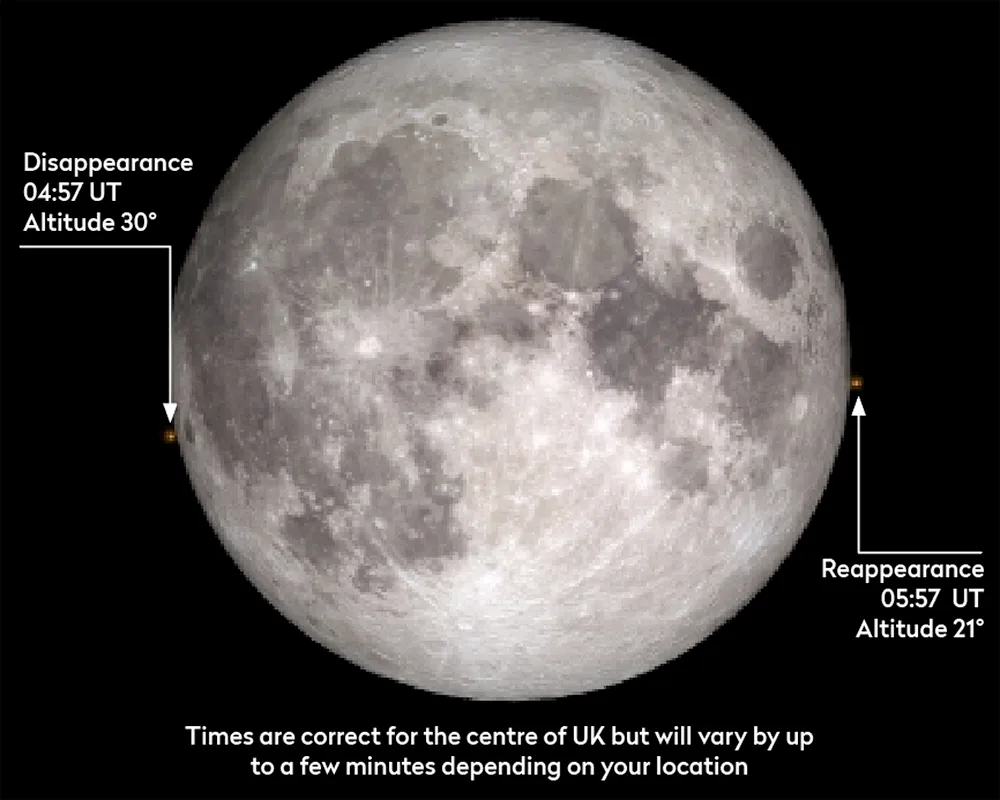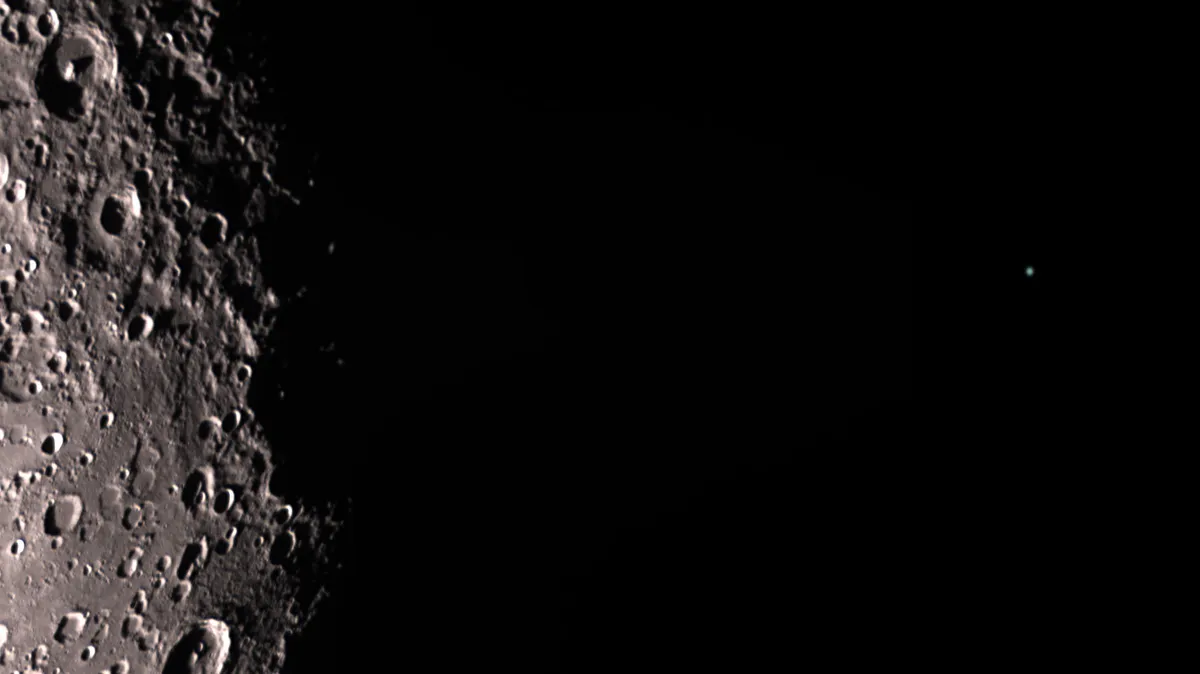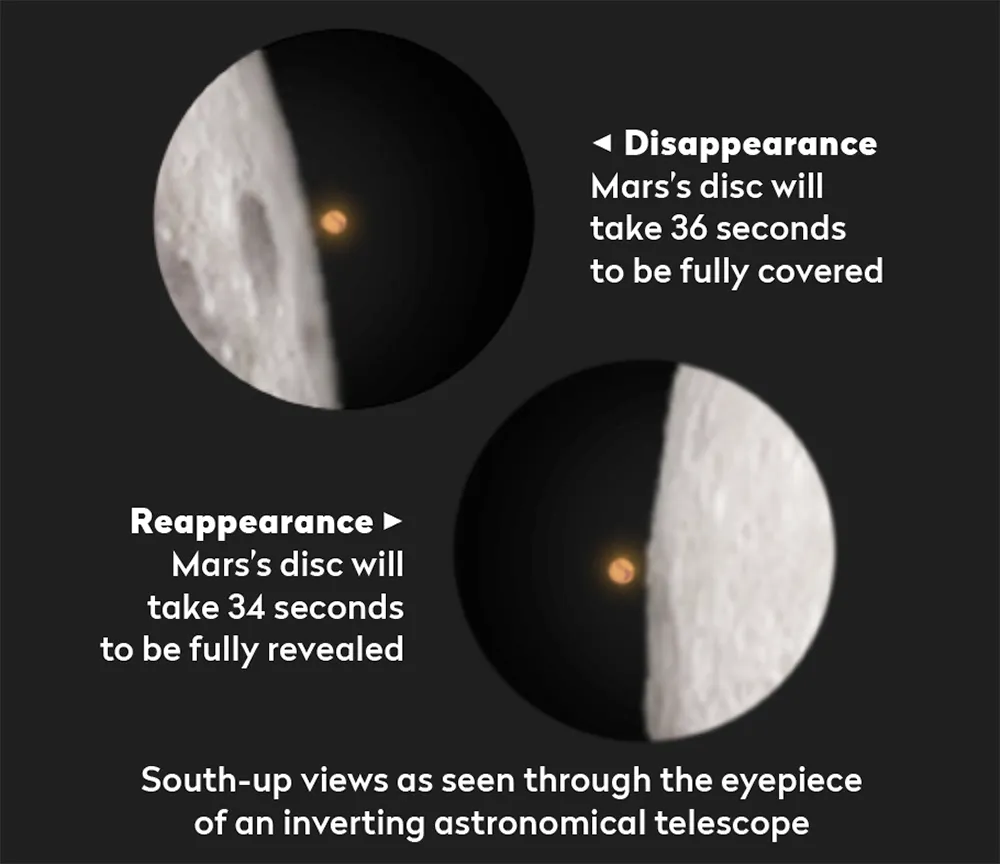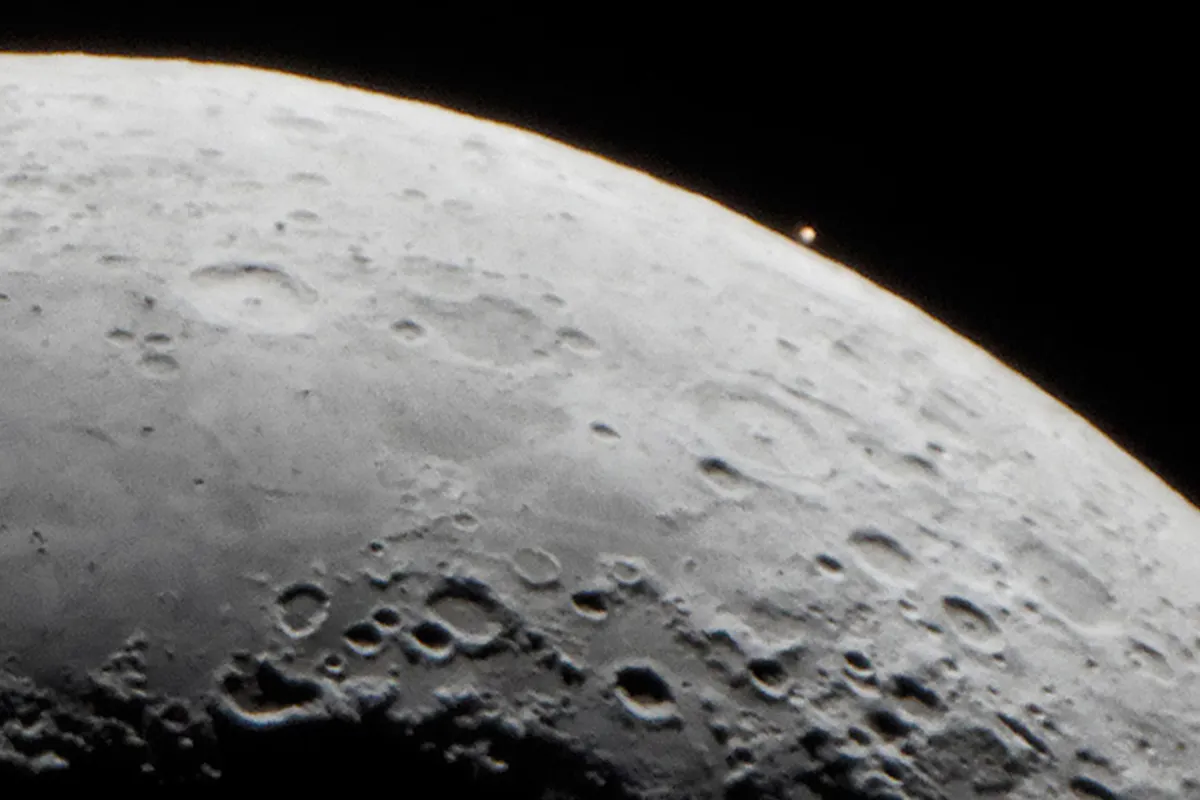It's great having one or two spectacular astronomical events to look forward to in the run-up to Christmas.For astronomers, it makes the festive period even more exciting.
Who could forget the famous Great Conjunction of Jupiter and Saturn in December 2020, or the wonderful sight of Comet Leonard in 2021?
Tomorrow, 8 December, Mars will be at opposition. And in the very early hours of the same day, Mars will pass behind the Moon in an event known as a lunar occultation.
The event is suitable for viewing with the naked eye, binoculars or a telescope and will be visible from most of North America, northern Europe and north Africa.
A mid-power magnification will give an amazing view, showing the Moon well and Mars as a tiny disc next to it.
Find out more about the Mars opposition or get more observing advice by signing up to the BBC Sky at Night Magazine e-newsletter and listening to our Star Diary podcast.

Lunar occultations explained
Although the Moon appears large, bright and dominant when in the night sky, its size is deceptive and in reality, its apparent diameter is pretty small at 0.5° across.
As it appears to travel around the sky over the course of a month, the Moon frequently passes in front of dim stars.
Occultations of medium-bright stars occur too, but these are less frequent, and occultations of bright stars are uncommon enough to be quite special.
But lunar occultations of planets are rare and to catch one is very special indeed.

You’ll frequently hear the Moon described as our nearest neighbour in space, orbiting at an average distance of 384,400km.
This relatively close proximity introduces an effect known as parallax and means that when viewed from locations that are widely separated, the Moon’s position against more distant background objects appears to shift.
From the UK, we’ve been lucky in terms of lunar occultations of planets in 2022.
In September the Moon moved in front of Uranus, leading to a lunar occultation of Uranus (an event that repeated this month on 5 December).
How to see the 8 December lunar occultation of Mars

On the morning of 8 December, we get our third occultation of a planet when Mars will be hidden by the full Moon.
Mars reaches opposition on 8 December too, when it will be opposite the Sun in the sky.
This is also why the Moon is full on this date; it too is technically at opposition.
Mars will be shining at mag. –1.9 and presents a disc 17.1 arcseconds across.
Consequently, it takes the Moon an extended time to fully cover and subsequently reveal Mars.
Where to watch the Mars occultation online
If you're clouded out or unable to watch the lunar occultation of Mars in person, astronomers from the Carnegie Institution for Science and Mount Wilson Observatory will be live-streaming the event.
Follow all the action below:
Mars occultation timings

From the centre of the UK, disappearance begins at 04:57 UT, Mars taking around 36 seconds to fully disappear.
Reappearance begins at 05:57 UT, the Red Planet also taking 34 seconds to reappear.
Now remember the mention of parallax. Your location within the UK will affect the timings slightly, varying them by up to a few minutes.
This is because locations away from the UK’s centre make the Moon appear in a slightly different position relative to Mars.
The best observing strategy for the lunar occultation of Mars is to start watching from 20 minutes or more before the stated event times, to make sure you don’t miss anything.
Are you planning to observe or even photograph the lunar occultation of Mars? Let us know how you got on by emailing contactus@skyatnightmagazine.com.
